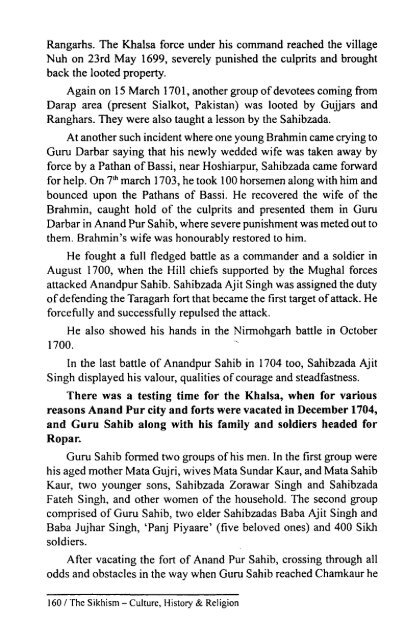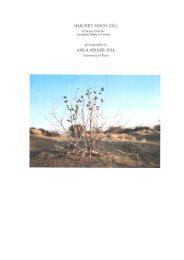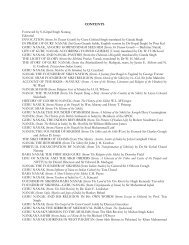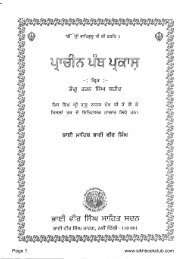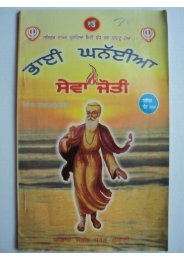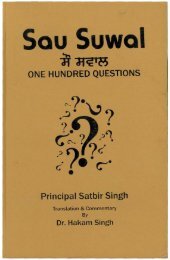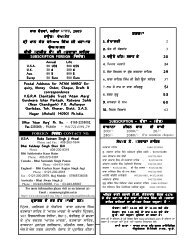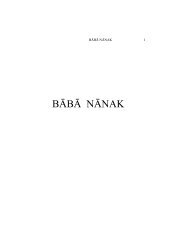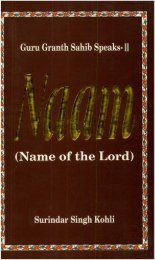You also want an ePaper? Increase the reach of your titles
YUMPU automatically turns print PDFs into web optimized ePapers that Google loves.
Rangarhs. The Khalsa force under his command reached the village<br />
Nuh on 23rd May 1699, severely punished the culprits and brought<br />
back the looted property.<br />
Again on 15 March 1701, another group ofdevotees coming from<br />
Darap area (present Sialkot, Pakistan) was looted by Gujjars and<br />
Ranghars. They were also taught a lesson by the Sahibzada.<br />
At another such incident where one young Brahmin came crying to<br />
Guru Darbar saying that his newly wedded wife was taken away by<br />
force by a Pathan ofBassi, near Hoshiarpur, Sahibzada came forward<br />
for help. On 7 th march 1703, he took 100 horsemen along with him and<br />
bounced upon the Pathans of Bassi. He recovered the wife of the<br />
Brahmin, caught hold of the culprits and presented them in Guru<br />
Darbar in Anand Pur Sahib, where severe punishment was meted out to<br />
them. Brahmin's wife was honourably restored to him.<br />
He fought a full fledged battle as a commander and a soldier in<br />
August 1700, when the Hill chiefs supported by the Mughal forces<br />
attacked Anandpur Sahib. Sahibzada Ajit Singh was assigned the duty<br />
ofdefending the Taragarh fort that became the first target ofattack. He<br />
forcefully and successfully repulsed the attack.<br />
He also showed his hands in the Nirmohgarh battle in October<br />
1700.<br />
In the last battle of Anandpur Sahib in 1704 too, Sahibzada Ajit<br />
Singh displayed his valour, qualities ofcourage and steadfastness.<br />
There was a testing time for the Khalsa, when for various<br />
reasons Anand Pur city and forts were vacated in December 1704,<br />
and Guru Sahib along with his family and soldiers headed for<br />
Ropar.<br />
Guru Sahib formed two groups ofhis men. In the first group were<br />
his aged mother Mata Gujri, wives Mata Sundar Kaur, and Mata Sahib<br />
Kaur, two younger sons, Sahibzada Zorawar Singh and Sahibzada<br />
Fateh Singh, and other women of the household. The second group<br />
comprised of Guru Sahib, two elder Sahibzadas Baba Ajit Singh and<br />
Baba Jujhar Singh, 'Panj Piyaare' (five beloved ones) and 400 Sikh<br />
soldiers.<br />
After vacating the fort of Anand Pur Sahib, crossing through all<br />
odds and obstacles in the way when Guru Sahib reached Chamkaur he<br />
160/ The <strong>Sikhism</strong> - <strong>Culture</strong>, History & Religion


